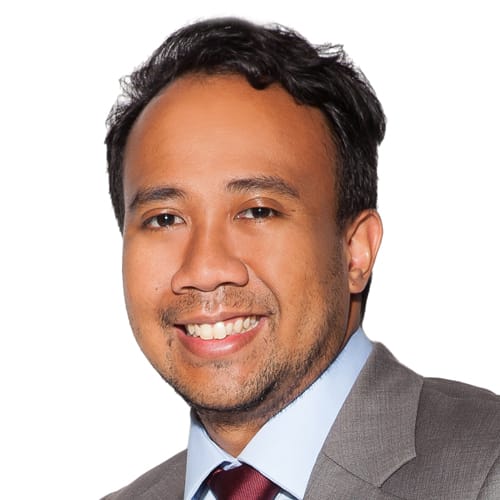As West Malaysia woos wealthy foreigners for its MM2H residency visa, Sarawak and Sabah emerge as popular alternatives
The Borneo states are seeing increasing interest in their own Malaysia My Second Home (MM2H) schemes, which require far lower fixed deposits and in some cases do not require applicants to buy a house.
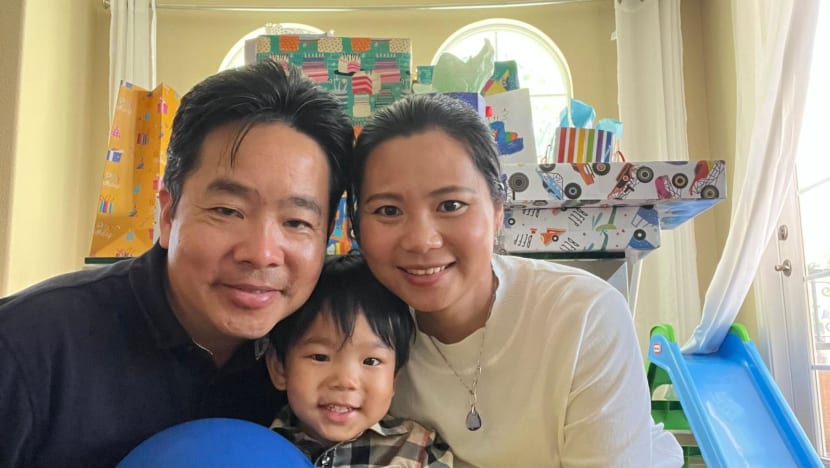
American citizen Jeffrey Ho and his family plan to apply for the Sarawak-MM2H visa to achieve his early retirement dreams in the state. (Photo: Jeffrey Ho)

This audio is generated by an AI tool.
KUCHING: For the past decade, American citizen Jeffrey Ho, 48, has considered Malaysia an ideal retirement destination for its affordable cost of living, “great” infrastructure and use of the English language.
In the years before the COVID-19 pandemic, he watched developments in Malaysia's residential and retirement visa programme closely, intending to apply for it once he reaches the age of 50 with enough savings amassed.
At that time, the Malaysia My Second Home (MM2H) programme offered a 10-year visa scheme for foreigners above 50 years old who could place RM100,000 (US$21,200) in a fixed deposit, and show proof of a monthly offshore income of RM10,000.
But after multiple reviews, the latest MM2H requirements released on Jun 15 state that applicants for the lowest silver tier - which offers a five-year renewable visa - must place a minimum fixed deposit of US$150,000, on top of buying a property priced at least RM600,000.
Mr Ho said these conditions left him feeling disappointed.
“Now that I'm close to 50 and have enough saved, the program has become unrecognisable from what it was pre-COVID,” he said, calling it “frankly ridiculous” to require both that sum of fixed deposit and the purchase of a brand new property that cannot be sold before 10 years, as per the MM2H rules.
“All this while the MM2H pass is only valid for five years. Just a bad investment all in all, and not one that I would make even though I have the monetary means to do so.”
The federal government’s announcement on the final conditions of its MM2H scheme has done little to appease potential applicants who have criticised it as too restrictive, and comes as Sarawak and Sabah have forged ahead with more affordable alternatives.
The Borneo states - which have autonomy over immigration and can therefore run their own MM2H schemes - are seeing increasing interest in their own programmes, which require far lower fixed deposits and in some cases do not require applicants to buy a house.
For instance, Sarawak’s tourism ministry expects 650 applicants for its own MM2H programme in 2024 - a spike from an average of roughly 148 approved applicants each year since it was launched in 2007.
Sabah’s tourism ministry, meanwhile, said it has already received a “large number” of enquiries for its own MM2H scheme, which the state only launched on Jun 30 and claims to be a “less rigid” alternative to the one in West Malaysia.
While the recently announced conditions of the federal government’s MM2H scheme seem to have only solidified interest in the Sarawak and Sabah versions, recent moves by the Ministry of Tourism, Arts and Culture (MOTAC) in Putrajaya have unsettled some of the inner workings of the Borneo states’ programmes.
Sabah said MOTAC’s early June introduction of more stringent licensing requirements for agents who handle MM2H applications had disrupted the planned launch of its programme, leading to public bickering between the federal and Sabah tourism ministers. The state has proceeded to launch its MM2H scheme even though Putrajaya says it never gave the green light.
The new licensing requirements have also rattled potential applicants and holders of Sarawak’s MM2H scheme, who worry about whether such changes could affect the terms and conditions of Sarawak-MM2H, amid a so-called “loophole” that allows them to live in West Malaysia despite being on the Sarawak programme.
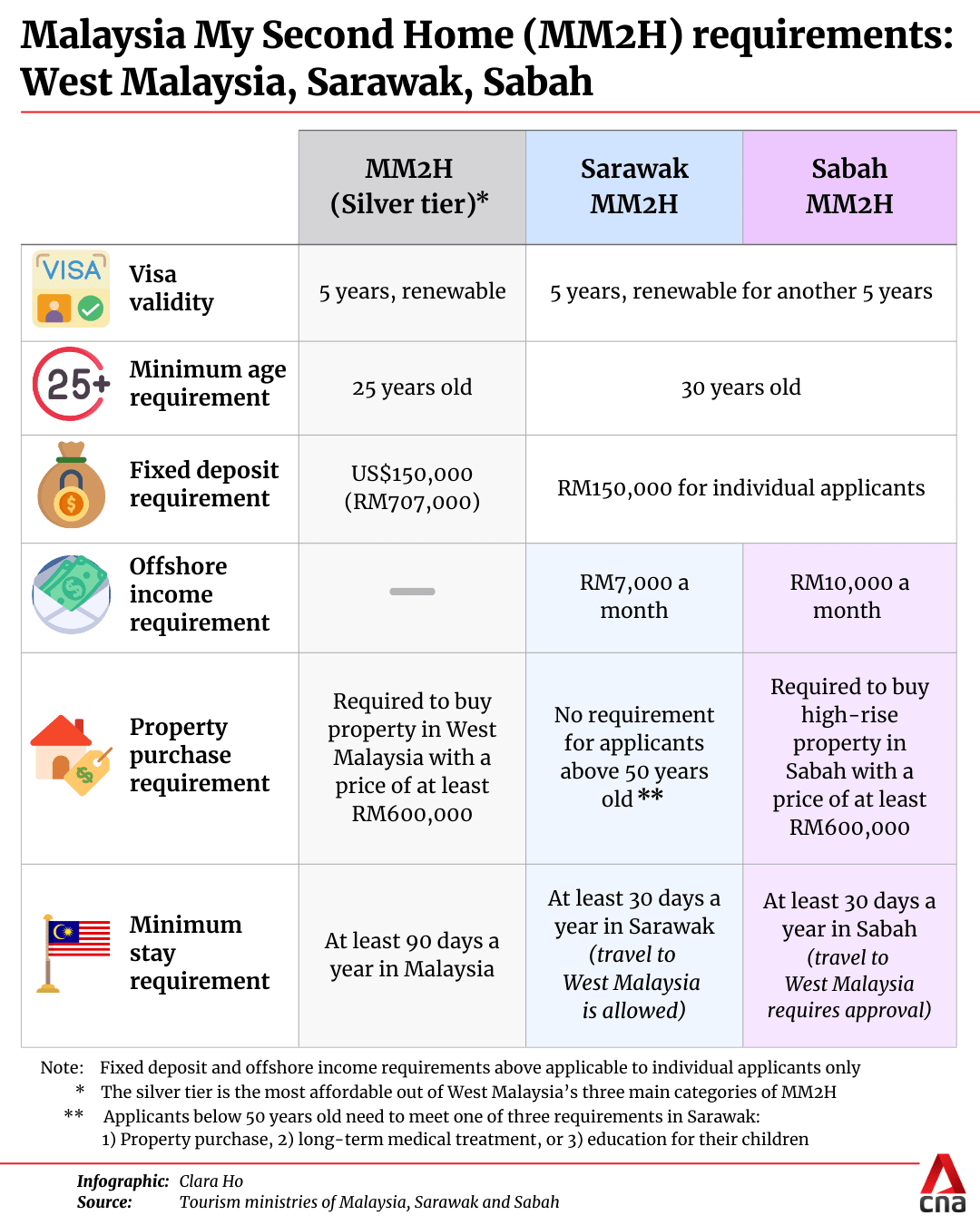
APPEAL OF SARAWAK-MM2H
Mr Ho, who works in sales and currently lives in San Diego, California with his wife and three-year-old son, said he is likely to apply for Sarawak’s MM2H programme instead of the federal government’s scheme as it would make better financial sense.
Sarawak’s current scheme requires a minimum fixed deposit of RM150,000 and monthly offshore income of RM7,000 for individual applicants, without the need to buy property for those above 50 years old. It offers a five-year visa renewable for another five years.
“From my understanding, at least at the current moment, Sarawak authorities don't care if you live in the peninsula as long as you fulfil your 30 days (a year) in Sarawak, which is reasonable,” Mr Ho said, adding that he is planning to rent a place in Kuala Lumpur and be based out of the capital.
“I'd be willing to take that risk. If things change and living in KL is no longer tenable, the absolute worst that could happen is I go back to living here in San Diego.”
The chatter on public MM2H Facebook groups seems to revolve around the same issue.
Both prospective applicants and current holders of Sarawak-MM2H, who welcome the more lenient requirements and the ability to travel freely to West Malaysia, are worried that either the Sarawak or federal government could clamp down on this “loophole”.
The latest version of Sarawak-MM2H’s approval letter contains a clause that says holders are “allowed to travel to West Malaysia except to reside in West Malaysia”.
But MM2H agents and holders said this clause is not actively enforced, and Sarawak’s Minister for Tourism, Creative Industry and Performing Arts himself indicated he was open to Sarawak-MM2H holders spending most of their time on the peninsula.
“Sarawak-MM2H participants can live anywhere in Malaysia and they only need to fulfil a minimum stay of 30 days a year in Sarawak,” Mr Abdul Karim Rahman Hamzah said in a written response to CNA.
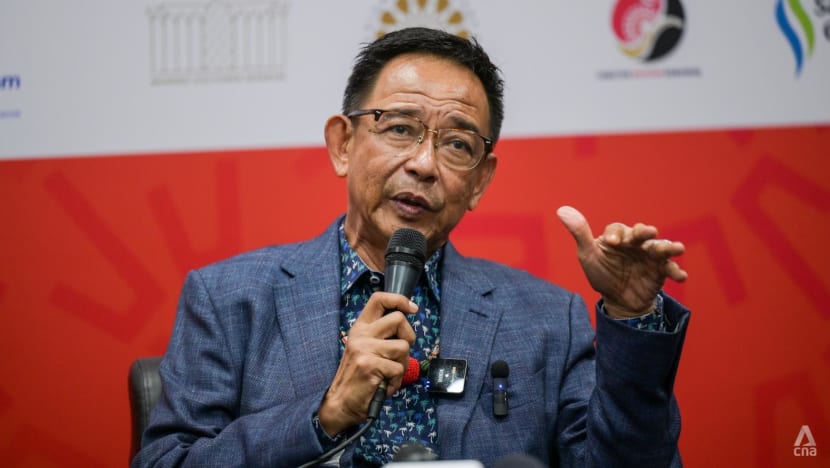
When pressed further on the sidelines of an environment summit in Kuching on Jun 26, Mr Abdul Karim said he was “quite open” to where Sarawak-MM2H holders wanted to stay.
“Even if they want to stay in West Malaysia, they have to rent or buy a place there, eat there. (This will) help the economy,” he said.
Mr Abdul Karim said it would be “crazy” to restrict Sarawak-MM2H holders from travelling to West Malaysia, noting that Sarawak remains a part of Malaysia.
“It would be different if they were to be a participant in Sarawak and then they are working in West Malaysia. This is the one that we have to finetune,” he added.
Sarawak-MM2H prohibits holders from running any business or working in Malaysia, while holders under West Malaysia’s MM2H gold or silver tiers can only work or conduct investments if approval is granted.
The highest platinum tier, which offers a 15-year visa and requires a minimum fixed deposit of US$1 million and a property purchase worth at least RM2 million, is the only category that lets holders work or invest without conditions.
NOT COMPETITORS
Mr Azreen Octavious, managing director of Sarawak-MM2H agent Arun Ami, said the West Malaysia and Sarawak versions of the programme have different target markets.
“The MM2H (in West Malaysia) is not our competition. The demographics are different: They are targeting rich foreigners, we are targeting pensioners and working-class retirees,” he told CNA.
These retirees are also people who want to experience Sarawak while living on the peninsula, he said, noting that 80 per cent of his clients are above 50 years old.
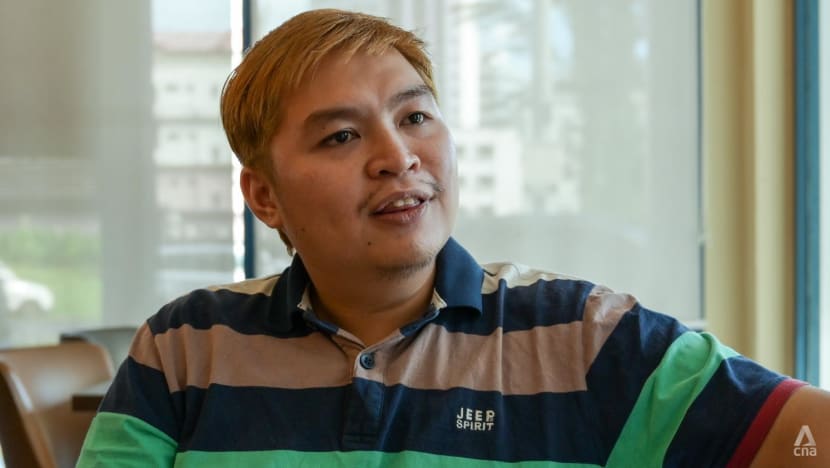
Mr Azreen said he is now seeing higher demand with three to four applicants a month for the Sarawak-MM2H, up from two to three a month in 2022 when West Malaysia’s MM2H was relaunched with extremely stringent requirements.
Interest in Sarawak’s version remains strong even with the release of the latest requirements in West Malaysia, he said, attributing it to how applicants are rushing to get accepted in Sarawak before any potential intervention by the federal government.
A sudden change in Sarawak-MM2H’s conditions in August 2022, when the state government raised the minimum stay requirement from 15 days to 30 days a year and mandated both the fixed deposit and offshore income requirements, had also unnerved applicants and holders to the very fluid nature of the programme.
Mr Azreen, who believes the changes were made to ensure Sarawak better benefitted from its programme, said applicants are keen to lock themselves in with the current conditions.
“It’s a no-brainer. They can get on the Sarawak visa and still travel wherever they choose, whether to West Malaysia or any other country, while returning to Sarawak for 30 days each year,” he said.
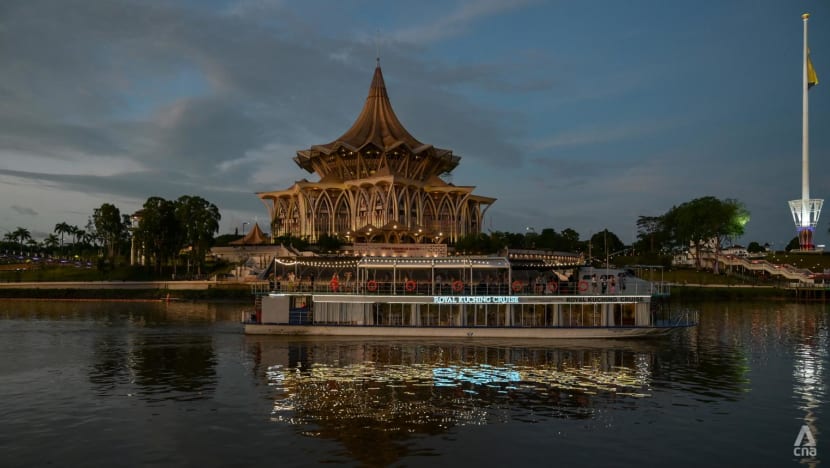
Mr Abdul Karim said Sarawak-MM2H has been successful in attracting “high-value” retirees to the state, with 2,593 participants approved since its launch in 2007 until June this year.
Most of the current holders are from China (373), followed by the United Kingdom (342), Taiwan (258), Hong Kong (251), the US (198) and Singapore (194).
The minister expects the “upward trend” in Sarawak-MM2H applications to continue and hit a peak of 650 applicants by the end of 2024.
“We hope that visitor arrivals and tourism receipts can be increased through promoting Sarawak as an international second home destination,” he said.
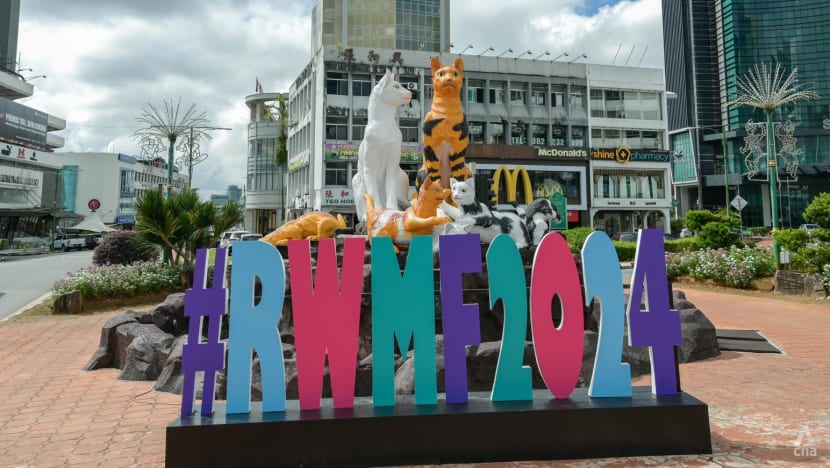
Sarawak received about 1.2 million foreign visitors from January to May 2024, a 40 per cent increase from the roughly 881,000 visitors in the same period last year, according to data from the Sarawak tourism ministry.
Tourism receipts from both foreign and domestic visitors in January to May 2024 amounted to RM5.2 billion, a 26 per cent increase from the RM4.1 billion in the same period last year.
The aim is for tourism to contribute 11 per cent to Sarawak’s gross domestic product (GDP) by 2030, Mr Abdul Karim said. Sarawak’s GDP in 2023 was RM146 billion, making it one of the top four contributors to Malaysia’s GDP, alongside Kuala Lumpur, Selangor and Johor.
“Lower living costs in Sarawak, compared to peninsular states in Malaysia, will be an advantage for participants, especially pensioners with limited economic resources (who) can further enhance their purchasing power,” Mr Abdul Karim added.
Evolution of MM2H
Launched in 2002, MM2H’s affordable requirements and attractive incentives made it the world’s most popular golden visa. In 2020, investment news outlet IMI described MM2H as the world’s largest investment migration programme by a “wide margin”.
But when COVID-19 hit, Malaysia temporarily suspended the MM2H programme in August 2020, in line with a government decision to bar foreigners from entering the country, and to allow it to comprehensively review the programme.
A revised MM2H was finally announced a year later in September 2021 with much more stringent requirements.
The minimum fixed deposit and monthly offshore income requirement was raised to RM1 million and RM40,000 respectively. In addition, applicants would have to prove ownership of liquid assets worth at least RM1.5 million.
MM2H applications dropped in 2022 as prospective applicants baulked at the stringent requirements and turned to a lesser-known but more affordable programme in Sarawak, MM2H agents told CNA.
Sarawak has its own version of MM2H (Sarawak-MM2H) because it has autonomy over its own immigration policies.
The programme at the time only required applicants to fulfil a minimum fixed deposit or monthly offshore income requirement. Furthermore, Sarawak-MM2H holders only needed to spend 15 days a year in Sarawak, and could travel freely to West Malaysia the rest of the time.
In October 2023, with MM2H applications down by 90 per cent, the federal government decided to suspend the programme again, pending a review.
It released new requirements in December that year, turning MM2H into a three-tiered programme, with the most affordable silver tier requiring a minimum fixed deposit of RM500,000.
While the new requirements addressed some pain points, prospective applicants were not entirely convinced, citing a lack of clarity on the offshore income and liquid asset requirements, and a desire to wait for a full list of requirements to be published.
This full list was only published on Jun 15 this year, with the federal Tourism, Arts and Culture Minister Tiong King Sing saying his ministry had taken a considerable amount of time to review and rectify “shortcomings” of previous MM2H conditions.
The offshore income and liquid asset requirements were scrapped across all tiers, but for the silver tier, the minimum fixed deposit sum was raised, and a property purchase requirement was introduced.
Meanwhile, participants across all categories of the MM2H scheme are not eligible to apply for permanent residency - a change from the December announcement that allowed those in the platinum tier to do so.
DON’T WRITE OFF WEST MALAYSIA?
Mr Chng Toh Ghee, managing director of Alter Domus, a leading agent that handles West Malaysia MM2H applications, said Sarawak-MM2H holders might switch to the peninsula’s latest version if they have the financial means to do so.
This is because many are aware of the clause barring them from residing in West Malaysia, and the possibility that it could be enforced down the road, he told CNA.
Mr Chng acknowledged that while the MM2H version relaunched in 2022 had spooked applicants with its minimum RM1 million fixed deposit, these conditions were “normalised” as applicants considered benefits like interest earned.
Enquiries about the programme still went up despite the latest requirement of buying a property, he said, pointing out that many applicants were rich enough and had already planned to buy a house to stay in West Malaysia anyway.
“I do believe that in the future, if Sarawak sees that the property markets in Penang, KL and Johor Bahru are booming because people are paying up (for homes there), Sarawak may say it wants its MM2H holders to buy property in Sarawak too,” he said.
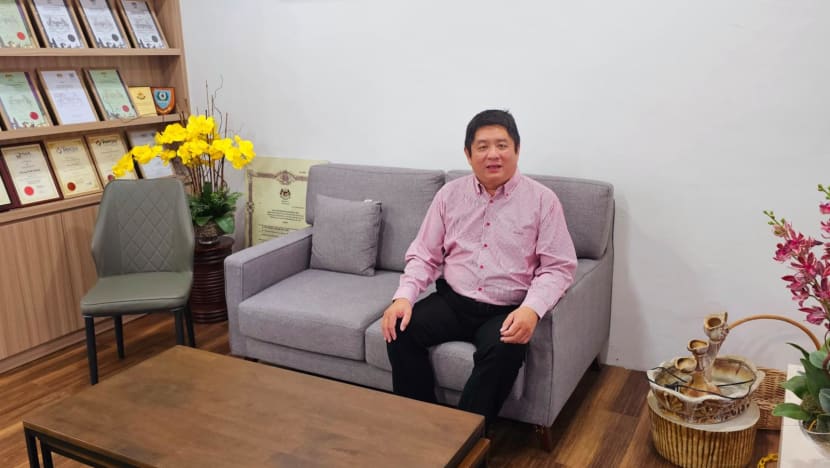
Sarawak-MM2H’s condition of not requiring applicants above 50 years old to buy property is one the biggest factors that make it highly popular with Western retirees who might be pension-rich but low on savings, and thus prefer to rent.
After Putrajaya announced the latest MM2H requirements on Jun 15, Mr Chng said his agency is getting about four to five enquiries a day, which he estimates will amount to an average of four to five applications a month.
This is an increase from the three applications a month he used to get before the Jun 15 announcement, he said, noting that most of his enquiries are from Singaporeans and those who are financially strong enough to move abroad.
“Singaporeans who come over to (live in) Johor know they cannot continue their lifestyle in Singapore and will probably finish their multi-million dollar fortune retiring in Singapore by the time they reach 70-plus years old,” he said.
“So, they might as well come over to Johor, KL or Penang and continue their ‘Starbucks lifestyle’ here, knowing that their money will stretch longer.”
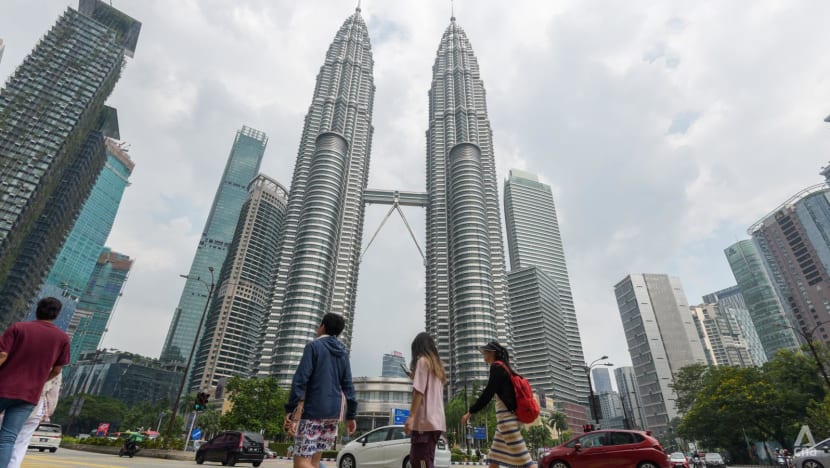
In March, the federal Minister of Tourism, Arts and Culture Tiong King Sing said West Malaysia had slightly more than 56,000 active MM2H holders - comprising principals and dependents - as of Jan 31, with the bulk of them Chinese nationals.
Chinese nationals (24,765) made up 44 per cent of participants, followed by Australia (9,265), South Korea (4,940), Japan (4,733), Bangladesh (3,604) and the United Kingdom (2,234).
Mr Tiong said at the time that the government was in the midst of improving the programme’s requirements, taking into account feedback from stakeholders and industry players. This will help increase the number of MM2H participants and encourage tourists and foreign investors to go to Malaysia, he said.
Still, Kepong Member of Parliament Lim Lip Eng said in a statement on Jun 6 that the MM2H, once a “beacon” for foreign retirees, is losing its appeal due to the newly imposed stringent regulations.
These include the mandatory property purchase with a minimum holding period of 10 years, and higher bank deposits, he said, highlighting that neighbouring countries Thailand and Indonesia have more flexible programmes.
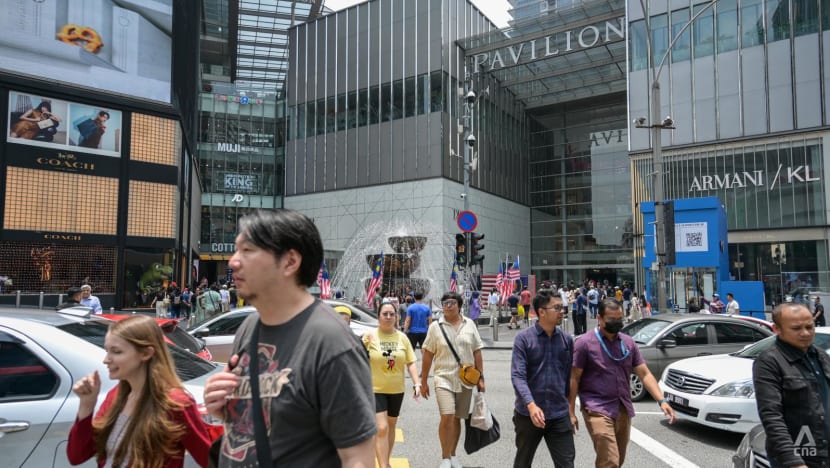
Mr Lim said the previous MM2H scheme, which attracted a diverse group of retirees and expatriates with its lower financial thresholds, had contributed RM58 billion to the local economy over 17 years.
“Although the new scheme's focus on high-net-worth individuals represents a policy shift, its stringent requirements have significantly narrowed the applicant pool,” he said, urging the government to reassess the 10-year property holding requirement to revitalise interest in the programme.
“In conclusion, the MM2H scheme needs to strike a balance between attracting high-net-worth individuals and providing flexibility to make Malaysia a desirable retirement destination.”
CNA has contacted Mr Tiong’s office for comments on the appeal of West Malaysia’s MM2H and comparisons with the Sarawak version.
SABAH JOINS THE PARTY
Mr Tiong had also crossed swords with Sabah’s Tourism, Culture and Environment Minister Christina Liew amid his ministry’s introduction in early June of more stringent requirements for all MM2H agents. Agents had received a federal memo in late May pre-empting them of these changes.
These include raising agents’ minimum capital from RM50,000 to RM200,000 and ensuring they have a valid business address, moves aimed at deterring unscrupulous practices like scam agents who give out fake documents.
But the new requirements affected smaller but legitimate Sarawak-MM2H agents whose licences were up for renewal, and Sabah-MM2H representatives who were gearing up for the launch, as they could not accept new applications if they did not meet the new requirements.
While Sarawak’s tourism minister Mr Abdul Karim criticised the federal ministry for not consulting his department first, the response from Sabah was particularly scathing.
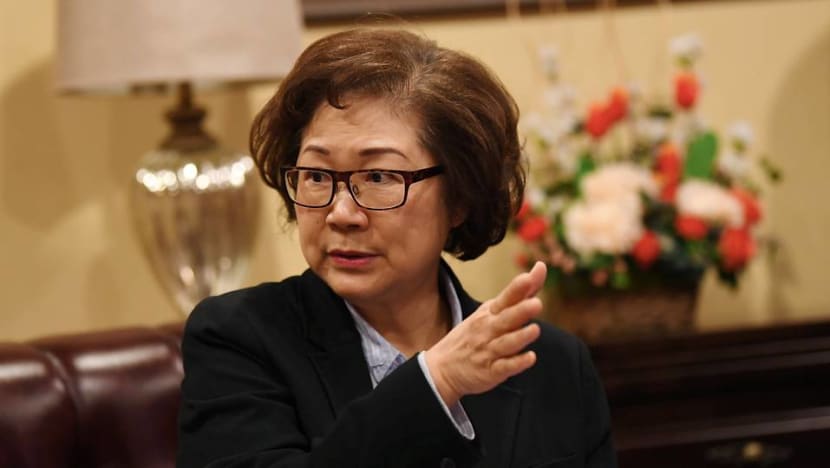
Ms Liew said Sabah had planned to launch its own MM2H programme on Jun 1, but was unnecessarily disrupted by the federal directive, local media reported. Sabah would proceed with the programme regardless of the directive, she said.
Mr Tiong then shot back, accusing Ms Liew of not turning up for any federal-level meetings to discuss Sabah's MM2H, a claim she denies.
The federal tourism ministry MOTAC has since appeared to soften its stance, with Mr Tiong saying he intends to delegate authority to Sarawak and Sabah over their own MM2H programmes, according to Dayak Daily. Both states are also pushing to introduce their own licensing requirements for MM2H agents or representatives.
With that, Ms Liew launched Sabah-MM2H on Jun 30, with applications open the next day. She told CNA in a written response that Sabah’s version is “less rigid” than the one in West Malaysia.
But MOTAC launched another salvo on Jul 4, saying in a statement that it never received nor passed Sabah-MM2H's conditions and criteria, accusing the state's Tourism, Culture and Environment Ministry of acting "unilaterally" without consulting Putrajaya.
MOTAC said it hopes that any Sabah tourism ministry decision on MM2H complies with the law, including the Tourism Industry Act 1992, and its regulations.
"The ministry welcomes a meeting with the Sabah Ministry of Tourism, Culture and Environment to clarify any issues or questions regarding the MM2H programme," it said.
When asked about this latest development, Ms Liew said she did not have comments for now.
Sabah-MM2H, which also offers a five-year visa renewable for another five years, requires a minimum fixed deposit of RM150,000 and monthly offshore income of RM10,000 for individual applicants.
But unlike the Sarawak-MM2H, Sabah requires applicants to buy high-rise property in the state priced at least RM600,000, regardless of age.
Sabah Deputy Chief Minister II Joachim Gunsalam had previously expressed hope that Sabah-MM2H could address the state's high-value housing glut, although he stressed that the priority was to provide homes for middle- and low-income Sabahans.
Mr Chng of MM2H agent Alter Domus suggested that Sabah’s mandatory property purchase requirement would make its MM2H a hard sell, with shrewd investors preferring to buy property in West Malaysia instead.
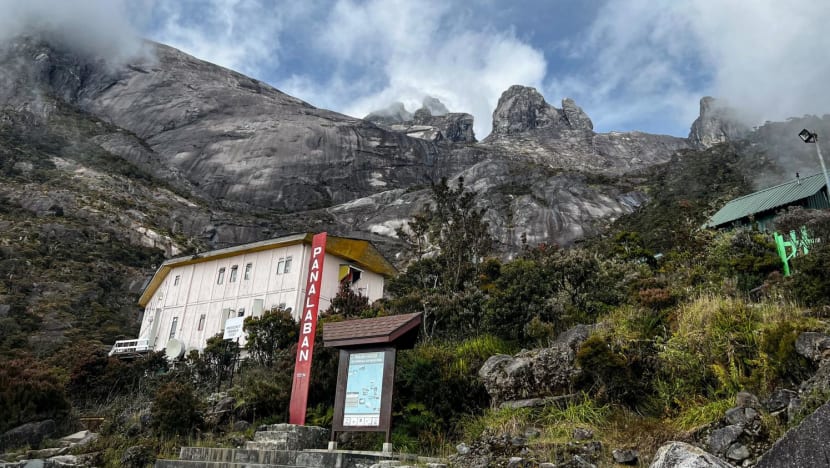
Despite that, Ms Liew felt the elderly and families with school going children would be “very interested” to live in Sabah, describing it as a unique state with a rich cultural heritage, natural beauty and iconic wildlife.
“We are a peaceful state with a message of harmonious coexistence,” she said.
“It has a more leisure-type pace of life that explains why many foreign nationals from the UK, Australia and America, among other countries, prefer to make Sabah their second home.”
Ms Liew said her ministry has received a “large number” of enquiries about Sabah-MM2H through email and phone calls, with a majority of them from China, Hong Kong, Taiwan and Singapore.
According to the Star, she told reporters in Kota Kinabalu on Jul 4 that her ministry has received "hundreds to a thousand" applications, in what she described as a "tremendous" response to the programme.
Another potential stumbling block, however, could be Sabah-MM2H’s more rigid requirement on travel to West Malaysia, despite its comparable 30-day a year minimum stay requirement in Sabah.
In response to a follow-up question by CNA, Ms Liew said Sabah-MM2H holders need “approval” before travelling to West Malaysia. When asked to clarify, she only said that holders first need to apply to Sabah’s immigration authority for approval.
It remains unclear if or how this will be enforced, especially as domestic travel from East Malaysia to West Malaysia is generally unrestricted.
BEST OF BOTH WORLDS
Sarawak-MM2H holder Eric Blank, 55, said he chose Sarawak over the West Malaysia version as it was more affordable and still allowed him to live on the peninsula.
Mr Blank, an American citizen who used to work for the US government, got his MM2H approval in November 2023 and is now based in Penang.
He told CNA he prefers to reside in West Malaysia as life there is faster-paced with a more vibrant expatriate community, and more options that suit his vegan diet.
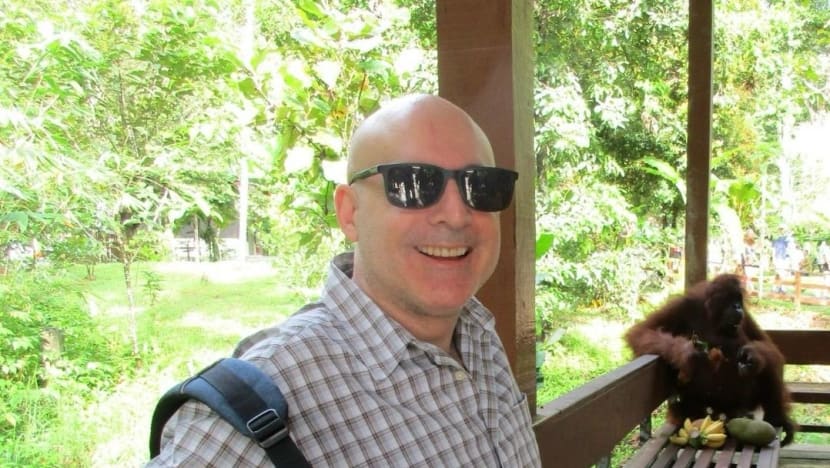
It has not been all smooth sailing. Mr Blank lamented how he was caught by surprise when the Sarawak-MM2H criteria was tightened in August 2022 just a month before he arrived in Kuching to complete his application, and then having to wait 13 months for approval.
He also recounted an exchange with a Sarawak immigration officer who seemed unhappy at how the Sarawak-MM2H was supposedly being exploited.
As Mr Blank was entering Kuching, the officer, seeing his Sarawak-MM2H credentials, asked him where he planned to live. When he said he felt more comfortable in Penang, the officer accused him of “using” Sarawak to live in Penang.
“She turned a cold shoulder to me. I said thank you (after my passport was stamped) and she just won't even look me in the eye,” he recalled.
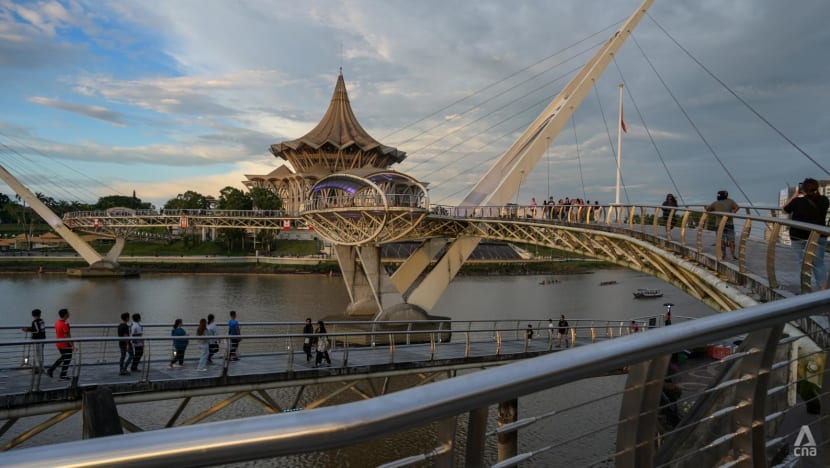
While Mr Blank expressed concern that the Sarawak-MM2H requirements could be further tightened in the future, he said he has no plans to switch to the West Malaysia version as he did not want to risk cancelling his current visa and going through the whole application process again.
“I understand inflation, and the ringgit is dropping against the US dollar, so they want to increase (the price of) things. I can understand that. But it's got to have some semblance to reality,” he said, referring to the current MM2H requirements.
Ultimately, Mr Blank said he does not mind flying to Sarawak four times a year to meet the minimum stay requirement, calling Kuching a safe place with “very nice” people who have treated him well.
“I have been so extraordinarily thankful that Sarawak is reasonable, that they're not going crazy with their MM2H requirements,” he said.
“And it’s a win-win for them. My money is in Sarawak, and when I visit for 30 days a year, I spend, spend and spend, so they're getting value out of me. I am living the life I want to lead, which happens to be outside of Sarawak.”
A LOCAL’S PERSPECTIVE
Kuching resident Azie Nurazrin Aziz, who runs a cafe serving Middle Eastern cuisine, believes the Sarawak-MM2H programme is a “good thing” as it brings in more tourist dollars that help local businesses.
The 36-year-old appreciates seeing new faces at her joint, saying that some Sarawak-MM2H holders have become regular customers and that locals in Kuching could benefit from being more exposed to different races and cultures.
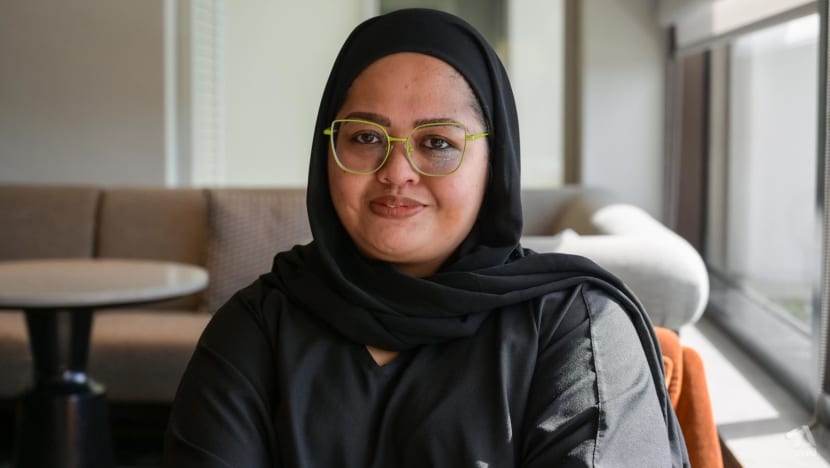
Still, Ms Azie Nurazrin feels a sense of injustice seeing Sarawak-MM2H holders get long-term visas, when foreign spouses of Malaysian citizens find it challenging getting permanent resident (PR) status in Malaysia.
Not-for-profit entity Family Frontiers, which advocates for family units, has called on the government to thoroughly review how it approves PR applications for eligible non-citizen spouses, noting that some have waited for more than four years with no outcome.
“The lack of PR status among the foreign spouses of Malaysians has created a common narrative of financial insecurity, employment challenges and uncertainty,” it said in a letter published by the New Straits Times in December 2023.
Ms Azie Nurazrin said her Syrian husband applied for PR status two years ago but has yet to be accepted, and that she has faced difficulty and discrimination throughout the process.
“The MM2H programme gives benefits to those who have money, but I feel it is unfair when it comes to those of us who marry foreigners,” she said.
Ms Azie Nurazrin also had some reservations about Sarawak-MM2H holders spending most of their time in West Malaysia, but said she accepted this as long as they meet the minimum stay requirement in Sarawak.
“I feel like they are taking advantage of the loophole, but they will still come back here. They do travel here and there, but they say that Sarawak feels more chill,” she added.








